In the heart of Burgundy on the Saône, in the town of Tournus, we visited the Romanesque church of Saint Philibert. This was originally a Benedictine monastery. It was founded in 875 as the monastery of Saint Valentine (by Charles the Bald) because Saint Valerian was buried here.
He was martyred for his faith in Christ in 178.
The monks came from the monastery of Noirmoutier. They had been expelled by the Normans and brought the relics of Saint Philibert with them. The relics had already been on a long journey, stopping in Déas - now Saint Philibert de Grand-Lieu - around 819, then in Cunault - now Chênehutte-Trèves-Cunault -, then in the Neuville-de-Poitou area, then in Auvergne. In 875, they finally reached the convent of Saint-Valérien in Tournus, which was later named after Saint-Philibert.
The existing church of Tournus was enlarged to accommodate the new monastery. However, the monastery and church were destroyed in 937 and rebuilt in 949. In 1007 large parts of the monastery burned down and the monastery church was rebuilt around 1020. The new church was consecrated by Pope Calixt II in 1120.
In 1627 the Benedictine monastery was dissolved and replaced by a canonical monastery. This was also abolished in 1785. In 1790, as a result of the French Revolution (1789-1799), the property passed to the town of Tournus. In 1802, the church was reopened for worship. The church was restored between 1841 and 1851.
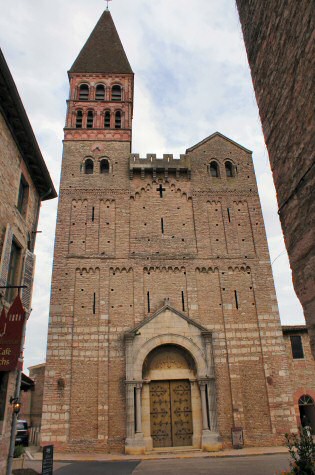

From the dark narthex (antechurch) with its thick, solid columns, the visitor steps into the bright nave. It is certain that there were frescoes everywhere originally. Modest remains are visible.

The simple nave. The transversely placed barrel vaults above the main
nave are interesting.
The side naves are covered by cross vaults.
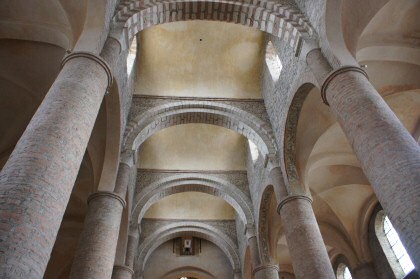
Since the Middle Ages, the Madonna Notre Dame la Brune (the Brown Madonna) has been venerated in the southern aisle.
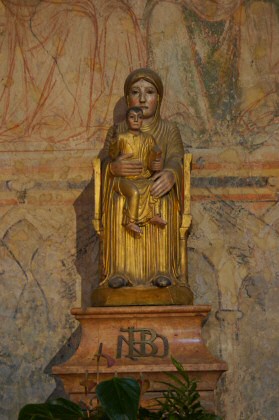
The statue is made of cedar wood and dates from the early 12th century. As usual in the Romanesque period, Mary presents her son, who looks like a small adult.

It was not until the 20th century that mosaics were discovered in the choir gallery. They date back to the 12th century and show signs of the zodiac and month works.
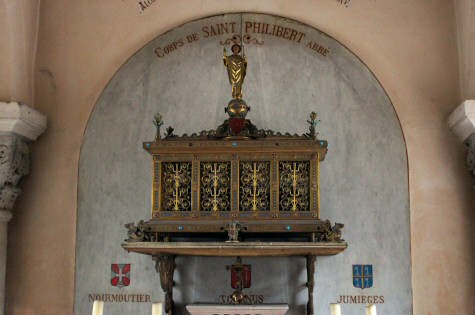
Philibert was the son of a high royal court official, Filibald. He grew up in Paris at the court of King Scrooge I and became a monk, then abbot at Rebais. Due to disagreements within the monastery, he resigned and travelled to monasteries such as Luxeuil - now Luxeuil-les-Bains - and Bobbio, which were founded according to the rule of Columbanus, as well as other monasteries in Gaul, Burgundy and Italy. In 655, with the support of the Bishop of Rouen, Audeoenus, and Queen Bathilde, he founded the monastery of Jumièges on land given to him by Clovis II, then the nunnery of Pavilly. He was banished after a quarrel with Ebroin, the master of Neustria, and spent his exile with Bishop Ansoald of Poitiers. While in exile, he founded the monastery of Noirmoutier on the island of Heriou off the Atlantic coast in 677. After the death of Ebroin, he returned to Jumièges and reconciled with Audoenus. Around 684 he founded the monastery of Montivilliers to the west of Pavilly and the monastery of St Benoît at Quinçay, near Poitiers.
The veneration of Saint Philibert spread quite quickly after his death in 685.
Source: Ecumenical Encyclopaedia of Saints
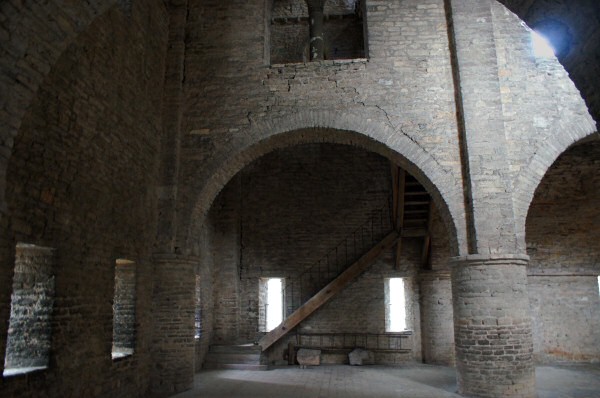
Above the forechurch there is the chapel dedicated to the archangel Michael.
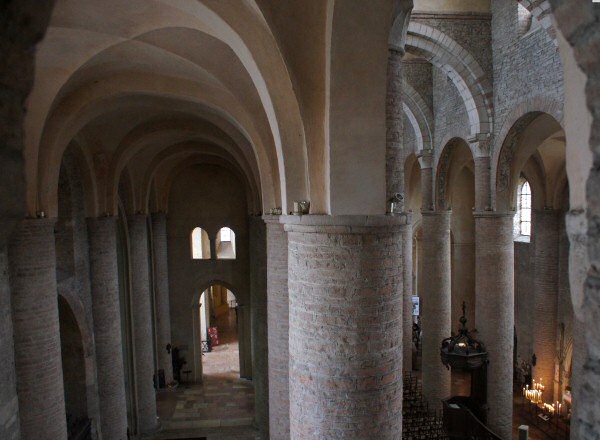
The room has three naves and is 12 m high in the central nave. The three naves are vaulted by longitudinal barrels. Since the installation of the organ in the 17th century, the view into the church has been obstructed. Only small stained glass windows allow a view into the vault of Saint Philibert.

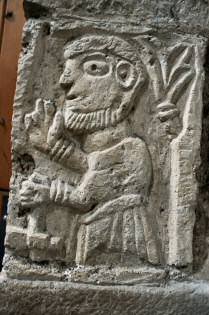
On the arcade leading to the main church there is a relief figure of a bearded man with a hammer, next to it an inscription plate with the name of Gerlannus, who is interpreted as the abbot or master builder of the church. The text of the damaged inscription probably reads: "Gerlannus Abate Isto Moneteium e ile". With another relief plate of the arch with a face, the figure is one of the oldest surviving works of Romanesque architectural sculpture.

The cloister was unfortunately largely destroyed. But the rest is also impressive.
